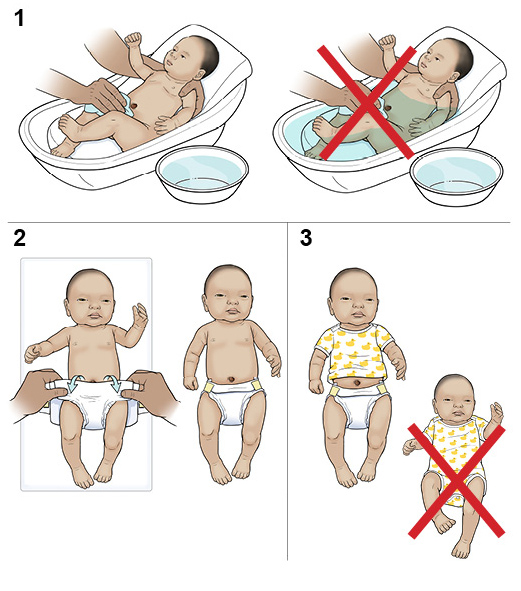Nurturing the Lifeline: A Comprehensive Guide to Umbilical Cord Care for Newborn Babies
The umbilical cord, a vital lifeline connecting the mother and her developing fetus, plays a crucial role in nourishing and sustaining the baby during pregnancy. After birth, this essential connection is severed, leaving behind a small stump that requires meticulous care to ensure proper healing and prevent infection. Understanding the intricacies of umbilical cord care is paramount for ensuring the well-being of your newborn.
Anatomy and Physiology of the Umbilical Cord
The umbilical cord is a flexible, cord-like structure that connects the developing fetus to the placenta, which is attached to the wall of the uterus. It consists of three blood vessels: two arteries that carry deoxygenated blood from the fetus to the placenta and one vein that carries oxygenated blood and nutrients from the placenta to the fetus.
Clamping and Cutting the Umbilical Cord
Immediately after birth, the umbilical cord is clamped and cut. The timing of this procedure varies depending on the specific circumstances of the delivery. In most cases, the cord is clamped and cut within a few minutes of the baby’s birth.
Umbilical Cord Stump Care
After the cord is cut, a small stump remains attached to the baby’s abdomen. This stump typically dries up and falls off within 10-14 days. During this time, it is essential to keep the stump clean and dry to prevent infection.
Steps for Proper Umbilical Cord Care
-
Keep the Stump Clean: Gently clean the stump with a cotton ball or gauze moistened with warm water. Avoid using soap or alcohol, as these can irritate the delicate skin.
-
Keep the Stump Dry: After cleaning, pat the stump dry with a clean towel or allow it to air dry. Avoid covering the stump with diapers or clothing, as this can create a moist environment that promotes bacterial growth.
-
Inspect the Stump Daily: Check the stump for any signs of infection, such as redness, swelling, or discharge. If you notice any abnormalities, contact your healthcare provider promptly.
-
Avoid Pulling or Touching the Stump: The stump is still attached to the baby’s body and should not be pulled or touched unnecessarily. This can cause discomfort and delay healing.
-
Bathe the Baby: You can bathe your baby as usual, but avoid submerging the stump in water. Gently sponge the area around the stump with a clean washcloth.
-
Dress the Baby: Dress your baby in loose-fitting clothing that does not rub or irritate the stump. Avoid using tight diapers or clothing that can restrict airflow.
Signs of Infection
In rare cases, the umbilical cord stump can become infected. Signs of infection include:
- Redness and swelling around the stump
- Discharge from the stump (yellow, green, or foul-smelling)
- Fever
- Irritability or fussiness
- Poor feeding
If you notice any of these signs, seek medical attention immediately.
When to Call the Doctor
Contact your healthcare provider if:
- The stump is not dry and falling off within 14 days
- You notice any signs of infection
- The stump bleeds or oozes
- You have any concerns or questions about umbilical cord care
Additional Tips
- Use a clean cotton ball or gauze for each cleaning to prevent cross-contamination.
- Avoid using baby wipes, as they may contain chemicals that can irritate the stump.
- If the stump is bleeding, apply gentle pressure with a clean cloth until the bleeding stops.
- If the stump is particularly large or slow to heal, your healthcare provider may recommend using a special dressing or ointment.
Conclusion
Umbilical cord care is an essential aspect of newborn care. By following these guidelines, you can help ensure that your baby’s umbilical cord stump heals properly and prevent infection. Remember to keep the stump clean, dry, and inspected daily. If you have any concerns or notice any signs of infection, do not hesitate to contact your healthcare provider. With proper care, your baby’s umbilical cord stump will heal quickly and without complications, allowing them to thrive and grow.

